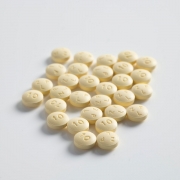Molecular Mechanisms of Action of Novel Psychoactive Substances
Novel psychoactive substances (NPS) represent a severe health risk for drug users. Even though the phenomenon has been growing since the early 2000s, the mechanisms of action of NPS at the receptors and beyond them are still scarcely understood. The aim of the present study was to provide a systematic review of the updated knowledge regarding the molecular mechanisms underlying the toxicity of synthetic opioids, cannabinoids, cathinones, and stimulants.
The study was conducted on the PubMed database. Study eligibility criteria included relevance to the topic, English language, and time of publication (2010–2020). A combined Mesh and free-text protocols search was performed. Study selection was performed on the title/abstract and, in doubtful cases, on the full texts of papers. Of the 580 records identified through PubMed searching and reference checking, 307 were excluded by title/abstract and 78 additional papers were excluded after full-text reading, leaving a total of 155 included papers. Molecular mechanisms of synthetic opioids, synthetic cannabinoids, stimulants, psychedelics, and hallucinogens were reviewed and mostly involved both a receptor-mediated and non-receptor mediated cellular modulation with multiple neurotransmitters interactions. The molecular mechanisms underlying the action of NPS are more complex than expected, with a wide range of overlap among activated receptors and neurotransmitter systems. The peculiar action profile of single compounds does not necessarily reflect that of the structural class to which they belong, accounting for possible unexpected toxic reactions.
Read this open access article in full AT THIS LINK.





